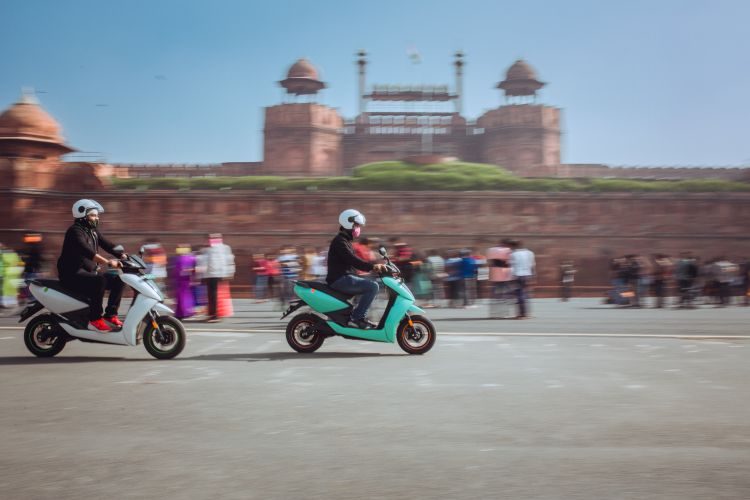
As the FAME-II scheme for electric vehicle manufacturing approaches its end, the government has announced a supplementary scheme, the Electric Mobility Promotion Scheme (EMPS) 2024. This initiative seeks to boost the sale of electric two-wheelers and three-wheelers in India. Heavy industries minister Mahendra Nath Pandey declared an allocation of Rs 500 crore for the new scheme which will be operational from April 1 to July 31, providing subsidies for about 3.72 lakh electric two and three-wheelers. The budget outlay for FAME II was Rs 10,000 crore which was raised last month by an additional Rs 1,500 crore.
The announcement of the EMPS scheme follows persistent requests from the automobile industry for the introduction of FAME III to support the adoption of e-mobility in the country. The current Faster Adoption and Manufacturing of Electric Vehicles (FAME) – Phase II is set to expire by the end of the current financial year.
READ | The Arctic standoff: Implications of new western sanctions on Russia
Subsidies cut under EMPS scheme
The government asserts that the new scheme will continue its efforts to promote electric mobility. However, it has reduced the maximum subsidy caps for e2W to Rs 10,000 per vehicle from the previous Rs 22,500, and for e3W to Rs 50,000 from Rs 111,505. This will help create higher demand and reduce the financial burden on EV manufacturers, even though EV adoption remains slow due to the high upfront costs, rendering electric vehicles expensive for the majority of the population.
The policymakers expect the subsidy cut to pave the way for a post-subsidy environment, as such financial support cannot be maintained indefinitely. Moreover, unlike the FAME-II, the EMPS does not offer incentives for electric four-wheelers (e4W) and buses. EMPS appears to be a diluted version of FAME II, introduced mainly to appease the industry without offering substantial benefits. The exclusion of e4W, despite appeals from key industry players like Tata Motors for an extension of FAME-II benefits to this category for another three years, is notable. However, the government mentions that for e4W and buses, existing schemes such as the Auto PLI and the PM-eBus Sewa Scheme are already in place.
The EMPS has received mixed response from the electric vehicle manufacturers. Industry leaders have expressed concerns over its short duration and reduced incentives compared with the FAME-II programme. They say that the limited four-month subsidy period signals a shift towards a market that values premium products over volume growth. They expect the EV market to witness slower growth rates and a focus on higher-end products to maintain profitability, given the substantial cost of producing quality two-wheelers.
The cut in subsidy caps for electric two-wheelers and three-wheelers raises concerns over the long-term impact on product innovation and market dynamics. The subsidy cuts for e2Ws and e3Ws may stifle innovation and force companies to limit their offerings to less powerful models. For e3W manufacturers, the over 50% cut in subsidies represents a significant challenge which may prompt them to focus on selling models that qualify for higher subsidy.
EVs remain elusive for most Indians
Electric cars are relatively expensive in India, primarily due to high upfront costs influenced by various factors. A significant component of EVs, batteries, are imported, mainly from countries like China, which adds to the cost. The evolving battery technology in India, along with the lack of widespread domestic manufacturing of other essential EV components like motors, power electronics, and charging infrastructure, further escalates the cost.
Additionally, the production and economies of scale for electric vehicle manufacturing have not yet reached the levels of conventional petrol or diesel vehicles. With lower demand for electric cars compared to traditional vehicles, manufacturers face higher production costs, which in turn affects the final price.
The FAME schemes have been instrumental in advancing electric mobility in India, with around 2.78 lakh vehicles supported under FAME I. FAME II, which began in April 2019 with a Rs 10,000 crore outlay for three years, was later extended to March 2024.
Thanks to the support of various schemes, EV sales have seen a robust increase, with sales this year alone increasing by over 45%. The total EV registration figure in 2023 is nearly 1.5 million units, significantly higher than the previous year’s 1 million. Currently, the overall EV penetration in the country is around 5% to 6.3%, compared with 4.8% in 2022.
While the incentives and subsidies are important, further efforts are needed to enhance EV adoption in India. The current incentives are inadequate, particularly as EVs are an evolving technology that requires significant research and development to improve battery technology and motor efficiency. EV adoption will not reach the desired levels without substantial government and industry support.
